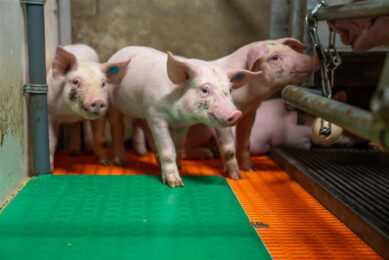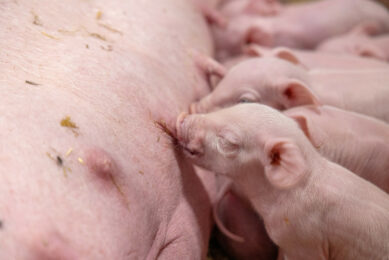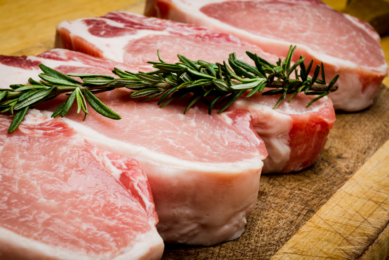OPINION: Big litters and pre-weaning mortality

Many people think that there is a relationship between big litters and pre-weaning mortality, and some salve their conscience when using it as a reason for their continuing pre-weaning mortalities of 10% -12%. While others, continuing to enjoy equally large litters from using the new genetics, have got mortality down to only 6%. Recent information coming my way from both groups of clients suggest this needs some ?discussion.
Are birth weights involved?
One group of opinion thinks that extra large litters mean more below-average birth weights due to more tail-enders in the birthing process being lighter in weight. There seems to be not much evidence of this, I find: maybe a little only. But those last to be born can certainly be anoxic, thus weakly and less likely to survive. I’ve been analysing the records I have from both the ‘six-percenters’ and the ‘twelve-percenters’, all of whom were using the new hyperprolific genetics.
You may also find interesting:
Winning one piglet per sow pre-weaning (with video)
Since the home farm of Detert Zuchttiere switched to Danish
genetics, extra attention was needed to keep the large amount of young piglets alive. Owner Carl-Josef Detert found a solution by installing balance floors in his farrowing area.
The average litter sizes of those born-alive were similar for both groups – 14 and 13.86 respectively – as were the birthweights, 1.5 and 1.4 kg, not a huge difference. All the same this did surprise me a little. However, using the well-publicised benchmark that for every 100 g increase in birthweight, pre-weaning mortality is likely to fall by 0.4%, the ‘twelve-percenters’ were way adrift of this guideline, losing 1.66 pigs litter compared to 0.84 pigs.
What might have been the reasons?
Attended farrowing. So if there are more weakly pigs at the end of a longer farrowing time, then looking after them and getting them established will demand more attention being spent on these tail-enders resulting from today’s much larger hyperprolific litter sizes. This has always been important.
Do we spend enough time with the baby pigs?
On the whole – no. There have been several surveys in the past on how much time is spent on various pig farm tasks, which I have analysed on a man/hours per sow/per year basis. These suggest between 50% and 57% is spent on breeding to weaning, of which farrowing to weaning only takes up 16% of this (2.2 hrs/sow year). This when divided by 21 days x 2.35 times/year spent between farrowing to weaning, say 58 hour days/year and half of it (200 hrs) spent on the litter, then out of the 2,600 man/hrs/ year available labour, this gives a figure of under 8% devoted to really small pigs. Several authorities, from the late lamented Dr Peter English downwards, say 16% is absolutely minimal.
You may also find interesting:
Home is where
the hygiene is
Nutrition, genetics, equipment… Many improvements have been made to maximise efficiency in pig production, but what about redefining a whole new approach to pig farming with hygiene as the primary focus. MS Schippers have done just that.
This encouraged me to try to determine among those of my clients who had time to give me a rough estimate of the difference, if any, spent attending to baby pigs between the ‘six-percenters’ and ‘twelve-percenters’ cited above. Sure enough the ‘six-percenters’ came out spending double the time on them as the ‘twelve-percenters’.
Will shortening the farrowing time help?
It should do. Attempts have been made through artificial means – neostigmine and a commercial product called Parturaid, but sadly they seem to have faded away. I am sure that keeping the sows in physical – by this I mean muscular – trim through adequate exercise must help the sow. This is another case for abandoning dry sow stalls for groups in well-designed yards. Attention to colostrum, especially for those last to be born in large litters, and the value of piglet-swapping and all the other measures available for the underprivileged baby pig, will help materially to reduce that stubborn 12% mortality figure.
But you won’t have time for enough of them only allocating 8% towards baby pig attention!











